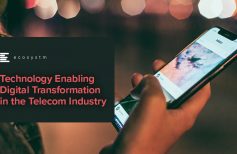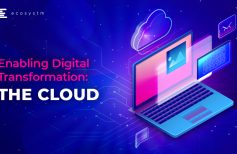
The internet was created by the US military to create a seamless self-repairing almost indestructible connection of computers and to maintain critical communications capability in the event of nuclear attacks on cities and government infrastructure. It wasn’t until the invention of the world wide web (www) that the internet became widespread. Since then, the evolution of digital and network technologies has made it possible to connect almost any device to the Internet. The Internet of Things (IoT) can include a wide range of machines, sensors, smart objects, unique identifiers (UIDs) – provided they are connected to the Internet and have the ability to send and receive data without human intervention.
There are a plethora of ‘things’ today that can be connected to the internet and are not restricted to devices and sensors alone. Anything with an IP (Internet Protocol) address can now be connected. Wireless technologies such as Wi-Fi, Bluetooth, and 4G/5G have created more possibilities for devices to be individually connected. With the advent of IoT, remote connectivity has become the norm bringing several advantages across all industries. The global Ecosystm IoT study reveals that organisations are looking to leverage IoT not only for asset management but also to fuel innovation.

The key to IoT is connecting any physical ‘thing’ to the Internet, allowing remote control and monitoring functionalities over the network. The power of the technology comes from the fact that these devices can then be used to monitor and get data from virtually any other device or application. This opens immense avenues for the connectivity of various applications and expands the overall potential of the Internet dramatically.
The simplest way to appreciate how IoT can benefit organisations is to see its operations in some industries. The list below is not exhaustive and includes:
- Medical and Health: The key technology enabling eHealth is IoT. IoT has enabled remote diagnostics and patient monitoring even beyond the walls of the hospital. Remote monitoring has a deep impact on improving health outcomes and enables community-based healthcare and aging in place practices.
- Construction: IoT enables almost all home and office devices to be virtually connected allowing remote activation and control based on specific data gathered from the environment. This application is being utilised in ‘smart homes’ and commercial buildings, allowing the automation of security, lighting, HVAC and other systems. IoT applications have made their way into Building Information Management (BIM) systems even at the design and construction phases.
- Energy and Environment: In one of the early use case in energy efficiency and distribution, IoT is used to monitor the energy requirements of homes and industries with the help of ‘smart grids’. The technology is also helping meteorologists to predict storms, earthquakes and other natural disasters with the help of smart sensors to monitor environmental changes.
- Transportation: Autonomous Vehicles or driverless cars have become the popular face of IoT application. More significant than the vehicles or the technology itself, are the parameters that are involved in providing the right infrastructure for these vehicles. IoT is already bringing substantial improvement in the industry with connected transportation systems and controls in the applications for trains, smart cars, and airplanes
- Manufacturing: The Manufacturing industry is where the concept of process automation originated. Needless to say, the industry is seeing an uptake in IoT as automation reaches a whole new level. The adoption of IIoT (Industrial Internet of Things) is allowing manufacturers better visibility of the supply chain, more efficient inventory management, and proactive asset management through predictive maintenance. This impacts both the productivity of the plants and the quality of the products.
- Agriculture: IoT has numerous use cases in making Agriculture more productive and efficient, such as automated irrigation systems, crop monitoring, pest control, driverless tractors, and other smart farming solutions. Smart Farming practices will ensure a better outcome for environment management and promote trust in agricultural products as the entire ‘food to fork’ supply chain becomes traceable.
- Smart cities: ‘Smart city’ is an often-used term that can have different meaning depending on the maturity of the country. What is common however is the widespread deployment of IoT applications, devices, and sensors to handle various activities providing citizen services and infrastructure monitoring such as traffic management, street lighting, citizen security and monitoring, and more.
The early use cases of IoT have been in automation and asset management. As technology and connectivity evolve, the applications will be more widespread and impact every aspect of our lives.







Really an interesting blog I have gone through. There are excellent details you posted here. Sometime it is not so easy to design and develop a IoT project without custom knowledge; here you need proper development skill and experience. However the details you mention here would be very much helpful for the beginner.